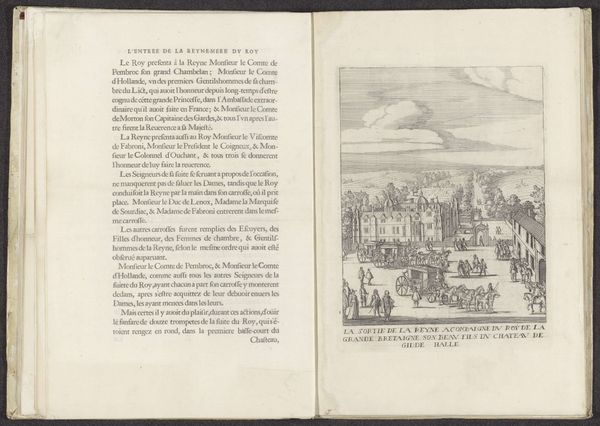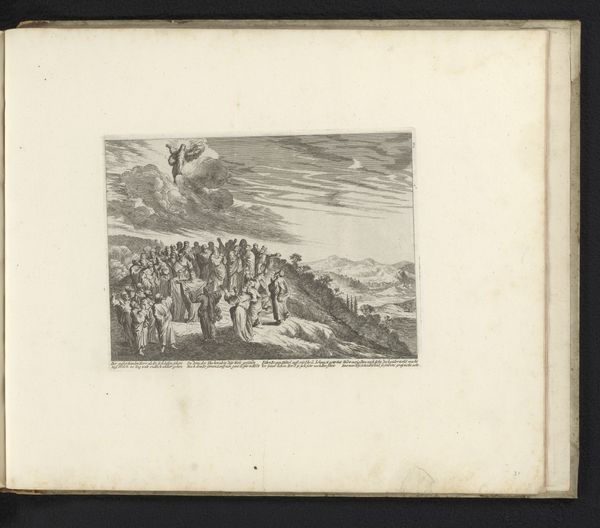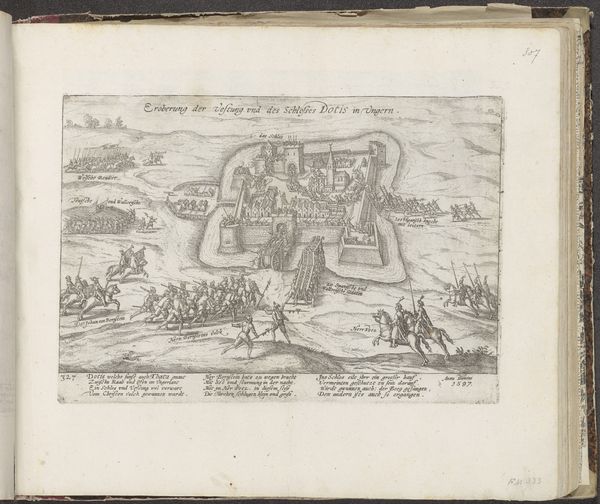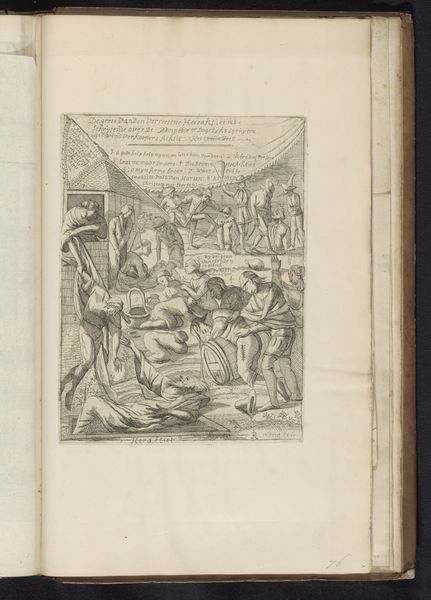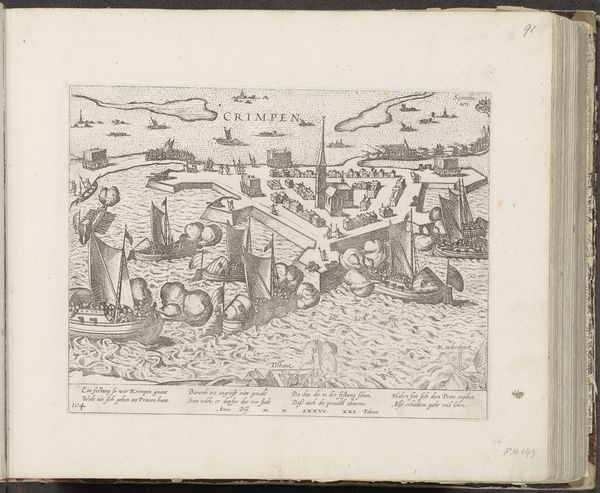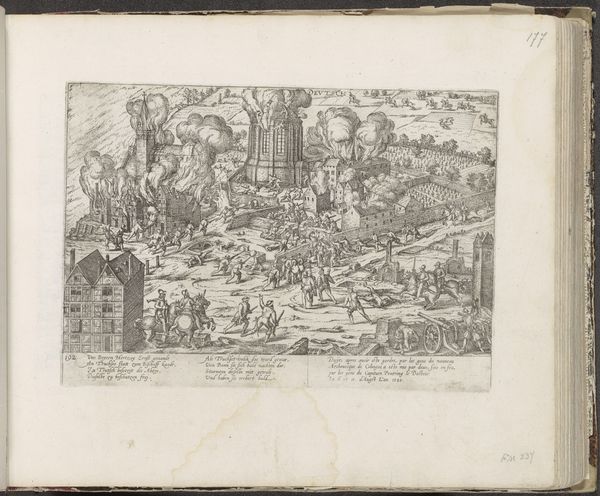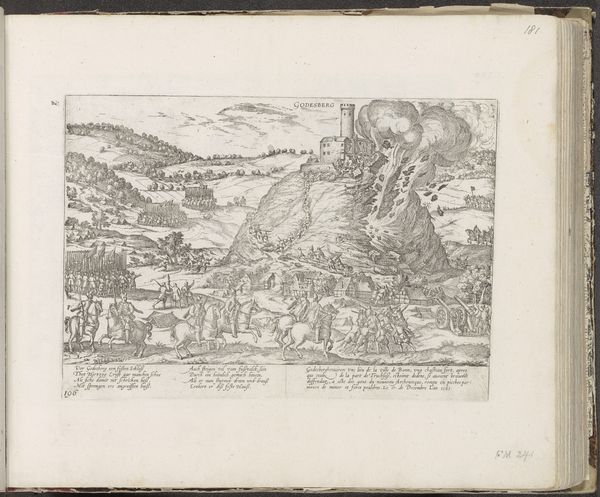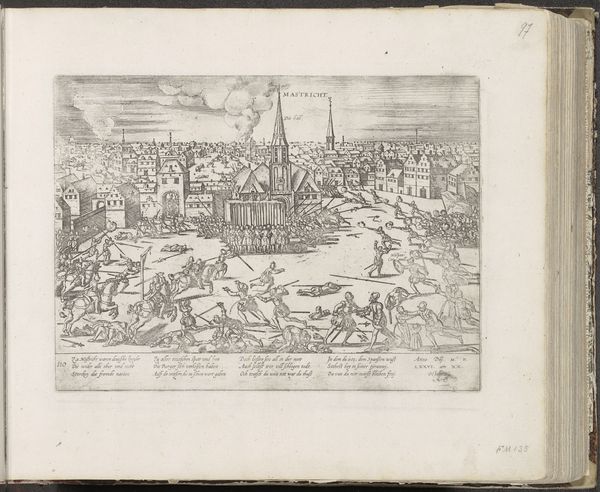
print, engraving
#
baroque
# print
#
cityscape
#
history-painting
#
engraving
Dimensions: height 306 mm, width 197 mm
Copyright: Rijks Museum: Open Domain
Curator: Let’s turn our attention to this intriguing print entitled "Vreugdevuur en vurende kanonnen ter ere van Maria de' Medici," or "Bonfires and Firing Cannons in Honor of Maria de' Medici." It was created anonymously in 1639. What’s your initial reaction to this cityscape? Editor: It feels incredibly staged. The ships are neatly arranged, and the smoke plumes from the cannons seem almost choreographed against the city backdrop. There's a sense of grand spectacle, but also something a little artificial. Curator: I agree; we’re seeing a carefully constructed image, meant to convey power and prestige. This engraving likely served as propaganda, visually documenting and amplifying the significance of Maria de' Medici's visit. Notice how the city itself seems to participate, erupting in celebratory gunfire and bonfires. Editor: It raises questions about whose story is being told and whose experiences are being centered. The 'joy' seems performative, masking the complex social realities of the time. Also, by visually connecting her arrival with such power—ships and cannons—does it inadvertently expose an anxiety regarding her acceptance? Curator: That's a compelling reading. It’s crucial to remember that images like this weren’t objective records; they were carefully crafted narratives. The cannons, for instance, could represent the military might backing the monarchy, ensuring order and control as much as they signify celebration. It's a clear demonstration of image politics. Editor: Exactly. It compels me to dig deeper into the historical context. Who commissioned this? What was the intended audience? Understanding these details sheds light on the power dynamics at play. Was this intended for wide distribution, aiming to shape public perception of Medici? Or was it primarily for an elite audience? Curator: Understanding its circulation is paramount. Prints like this, reproduced and disseminated, had the potential to shape public opinion and legitimize political power in a way accessible even to those excluded from courtly life. Editor: Looking at this piece, I'm reminded that historical artwork needs interrogation. We need to uncover the layers of intention, power, and possible exclusion embedded within it. Curator: Indeed. Approaching art with a critical eye allows us to expose not only the grand narratives, but also the silences and omissions within. Editor: Thank you, this was an engaging way to unpack such a dense image. I'm now eager to explore similar artworks from this period!
Comments
No comments
Be the first to comment and join the conversation on the ultimate creative platform.
